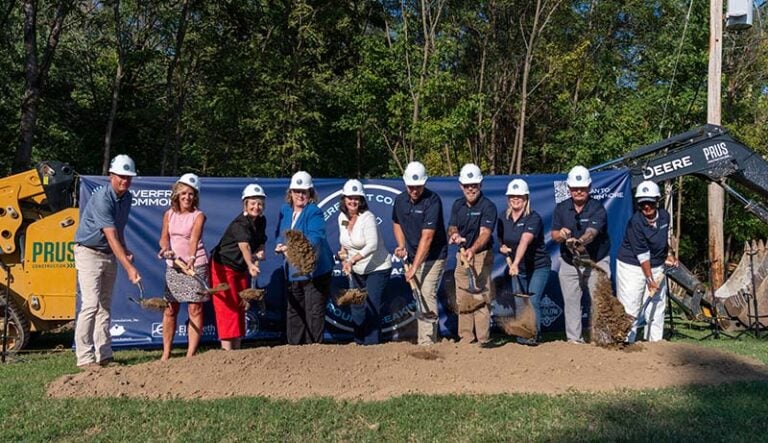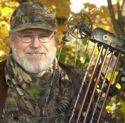Now is the time to start looking for shed antlers. By early February in Kentucky bucks have “dropped” their antlers from the past year.
They weaken at the pedicle (base), and fall off the deer’s skull, usually when jarred loose by jumping a ditch (or fence), getting up from the their beds, running, or walking through thick cover. A scab forms over the pedicles and new growth won’t resume for several weeks.
Antler growth starts slowly in early spring, then accelerates in June, with the lengthening days and an abundance of protein-rich forage. The antlers on older bucks grow rapidly, as much as two inches of main beam length a week, during this period.
The growing, forming antlers are soft and spongy, covered by a velvety skin that is fed by blood vessels.

As antlers reach their final length and configuration in late summer, they begin to harden into bone. The blood supply is shut off, and the velvet layer dries up. By late August, early September, most bucks in Kentucky have rubbed off their velvet and polished their antlers on saplings and woody shrubs.
The size and configuration of antlers is influenced by access to quality nutrition, age and genetics. Antler growth is regulated by hormones, which are controlled by photoperiod (length of daylight).
Here’s some shed hunting tips:
* Go slow, and take along binoculars, so you can scan areas that are difficult to walk through. Don’t just wander aimlessly. Walk slowly, and thoroughly search the area, in all directions. Focus on one small area at a time and very methodically, focusing on the ground, 10 to 15 feet ahead, left and right. Stop every once in a while to really survey the ground around you and behind you. It’s easy to walk within a few feet of an antler and never see it.
* While squirrels and mice do nibble on antlers, and damage them, it’s possible to find antlers that are many years old. There are always going to be antlers on the ground to find.
* Antler hot spots are the edges of old corn and soy bean fields, bedding areas and nearby deer trails, and places where deer are feeding now, such as green fields of winter wheat. Follow deer trails as they cross ditches, go up hills, and through thickets.

* A good time to hunt for sheds is on a cloudy, rainy day. It’s much easier to see sheds without all that glare from the bright sun. Rain tends to mat down the leaves and makes antlers stand out. Train your eyes to look for the glistening tip of a tine among the dull, brown leaf litter and sticks.
* The more sets of eyes, the better, so invite family or friends (hunting buddies) to the shed hunting party.
* Bring the dog. It’s possible to train your dog to find sheds. Of the gun dog breeds, the Labrador Retriever is a top choice. Labs may find and bring antlers to you instinctively, but training your puppy will ensure of lifetime of success finding sheds.
It begins with a simple game of fetch using a small antler, or part of an antler. This will help your dog distinguish between an antler and his favorite toy when he gets to the woods or fields.
Grind down any sharp tips so the dog does not injure itself with the new, awkward toy. A small piece of antler is ideal for puppy training. Only real antlers will work — it’s the scent of the antler that dogs home in on so use a fresh shed, not one that is sun bleached or dried out. Old antlers are likely to have lost a significant portion of their scent, making it difficult for your dog to locate them by smell.
Give deer antlers to your dog to get him used to the look, feel and scent the antlers give off. Let your dog play with antlers and use them as chew toys. This is one of the best ways to get your dog used to finding sheds in the wild.
For more outdoors news and information, see Art Lander’s Outdoors on KyForward.
Training begins by tossing deer antler sheds in the yard during the summer, giving the command “find the shed.” When your dog obeys your command and retrieves the antler, give him a treat followed by lots of petting and praise.
It won’t take many times of doing this before your dog is able to find antlers in the woods. Any dog that is capable of retrieving at home during a game of fetch will likely be able to come back with a shed he finds in the woods.
Another reason for looking for shed antlers after deer season is walking your hunting areas.
Deer trails, scrapes and antler rubs will still be visible in the winter. Dropped antlers are proof that a buck made it through the season, and provides clues to where he feeds, beds and the travel routes he uses.
An area where a shed was found could be a good place to hunt or set up a trail camera next season. Don’t underestimate the value of information gained from looking for sheds.
There are many practical and decorative uses for antlers. A large pair of sheds make great rattling antlers, used to simulate fighting bucks during the rut.
Small sheds are ideal for knife handles.
A set of medium-sized antlers can be fashioned into racks for hanging clothes and hunting accessories. Some hunters make lamps and wine racks out of the sheds they find, ideal decor for hunting camps, lodges or man caves.
Deer hunters are fascinated by deer antlers, their endless shapes and their annual growth cycle. A shed from a buck is a memento from a wild creature we admire and pursue with passion each fall.
Art Lander Jr. is outdoors editor for NKyTribune and KyForward. He is a native Kentuckian, a graduate of Western Kentucky University and a life-long hunter, angler, gardener and nature enthusiast. He has worked as a newspaper columnist, magazine journalist and author and is a former staff writer for Kentucky Afield Magazine, editor of the annual Kentucky Hunting & Trapping Guide and Kentucky Spring Hunting Guide, and co-writer of the Kentucky Afield Outdoors newspaper column.


















